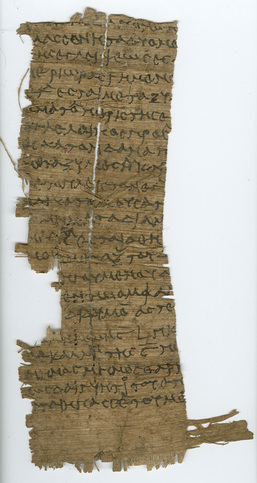The leading work on this subject is: Alexander Jones, Astronomical Papyri from Oxyrhynchus (2 vols. Philadelphia: American Philosophical Society, 1999).
| "[The moon's disk?] will be eclipsed from the south by less than two thirds [of its diameter]. [The total duration] of the eclipse will be about three hours. The [inclination at first] obscuration will be between south [and] east; the [maximum] obscuration will turn the inclination [to the south;] and the final emersion between south and west. [At] the maximum obscuration the diameter bisecting the [moon's] segments [will incline towards] the south. The [moon] will be [in] Gemini between the right [...] [...] of the leading twin [and] the star in the navel of the [trailing] twin. At an interval of 6 months, in the year 3 [..., according] to Callippus [the 6th year] of period 6, mid-month of the month Thargelion, and in the Egyptian month Epeiph [(night of days) 1/2,] the full moon will be [...]" |

